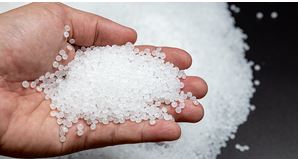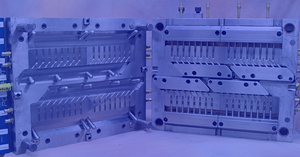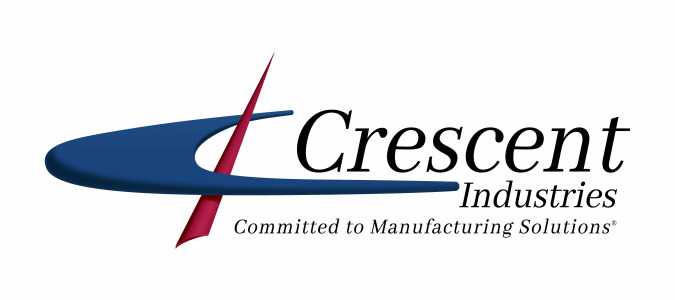Plastic Injection Molding Material Selection: How To Pick The Best For Your Medical Device Production
 Plastic injection molding for medical device production is a critical process that must meet exacting quality, accuracy and cleanliness standards. If these high standards are not kept, the products may pose a risk to patients and health care workers. Medical device injection molding requires not only that the process and output be high-quality, but that the facility in which the products are manufactured and handled be a controlled and sterile environment.
Plastic injection molding for medical device production is a critical process that must meet exacting quality, accuracy and cleanliness standards. If these high standards are not kept, the products may pose a risk to patients and health care workers. Medical device injection molding requires not only that the process and output be high-quality, but that the facility in which the products are manufactured and handled be a controlled and sterile environment.
Injection molding is a process well-suited for medical device production. It is versatile, efficient, has a fast turnaround, is capable of high volumes and (perhaps most importantly in medical plastic molding) offers a broad range of materials from which devices can be manufactured. This extensive injection molding material selection is key in a field where unique and diverse physical properties are required.
Below, we will take a closer look at what material to use for different injection molding applications in the medical field.
Injection Molding Material Selection for Medical Devices and Components
To select the right medical injection molding material, there are several factors to consider. First, we’ll take a brief overview of those factors. We’ll then look at how they are reflected in injection molding materials for medical device applications:
- Hardness: A plastic injection molding material’s hardness refers to its ability to resist deformation — whether via abrasion, indentation, penetration or other methods. Some applications require materials at the higher end of the hardness scale (also known as durometer), while others require softer materials.
- Flexibility: Flexibility refers to a material’s ability to bend without breaking, degrading or deforming. It differs from hardness in that a material can possess a high degree of hardness while still maintaining flexibility.
- Organic compatibility: In the medical industry, organic compatibility is critical for applications such as implantable medical devices, internal prostheses and procedures such as joint replacement.
- Heat handling: Some molding materials are able to handle higher levels of heat than others. This is important for sterilization and cleaning purposes.
- Chemical resistance: For materials used for handling, mixing or testing chemicals, they must be inert and non-reactive with those chemicals to ensure safety and the integrity of processes.
- Radiation resistance: In scenarios where a material may interact with radiation, whether for sterilization or other processes, that material must be able to retain its physical properties.
- Cost: While the correct physical properties are the most important consideration in medical applications, cost can remain a factor, especially where materials at different price points can fulfill the same need.
With these factors in mind, let’s look at how to choose the right plastic material for injection molding by examining various materials and their properties:
- Polyethylene: Featuring excellent chemical resistance with a reasonable cost and a broad range of material properties suitable for medical use, polyethylene is frequently used in medical plastic molding. It is inert, has high strength, and can handle high enough heat levels to be sterilized via steam in an autoclave. Polyethylene is used for internal implants, medical containers, packaging, pouches and bag headers. Organic compatibility means that it can also be used in joint replacements.
- Polypropylene: Polypropylene is highly resistant to impact and cracking under stress, and it can be sterilized via autoclave. It is used in syringes, membranes, sutures, medical containers and bags. It can also be used in applications that require a hinge.
- Polystyrene: Polystyrene is a low-cost solution for disposable equipment that does not need to be sterilized after use, such as petri dishes, culture containers, flasks and pipettes.
- PVC: A low-cost material frequently used as a replacement for rubber. PVC is used in applications such as medical tubing, blood bags and artificial limb materials.
- Polyamide/nylon: This material carries a higher cost, but is strong, inflexible and temperature-resilient. It is resistant to nearly all chemicals, but is not suitable for use with alcohols or acids.
- Polycarbonate: Polycarbonate is often used as a high-strength, break-resistant alternative to glass. It is naturally transparent and can be easily sterilized via numerous methods including steam and gamma radiation. Polycarbonate applications include tubing, high-pressure syringes, cannulas and various medical housings.
- PEEK: PEEK offers excellent mechanical and chemical resistance properties, with high resistance to thermal degradation. It is frequently used for medical pumps and implantables.
- PEI: PEI is a thermoplastic, available with an appearance from an amber color to completely transparent. PEI is used in medical instrumentation.
- PES: PES is known for its toughness and stability at high temperatures. It is flame-retardant, and suffers no compromise to its strength — even at extremely high temperatures and flame applications. PES has lower resistance to some solvents, as well as to weathering conditions such as UV. PES can be used in medical applications that require autoclave and steam sterilization.
- PPSU: Offering ultra-high toughness, good chemical resistance, thermal stability and biocompatibility, PPSU is used in medical appliances, dental applications and surgical instruments, as well as healthcare applications. It can be sterilized via autoclave, steam, ethylene oxide and radiation.
- PSU: PSU is flame-retardant and is resistant to high temperatures, acid, alcohol and alkali. It offers good dimensional stability, is hydrolytically stable and is hydrocarbon-resistant. Sterilizable with autoclave, heat, e-beam, ethylene oxide or radiation. PSU is used in medical, healthcare and dental applications.
- TPE: TPE offers good colorability with a rubber-like feel, and is frequently used in personal care, medical, and healthcare applications. TPE is especially well-suited for overmolding applications, as well.
- TPV: TPV is used for its durability for medical device grips, offering fatigue resistance, chemical resistance, UV resistance and weather resistance.
Plastic injection molding plays a major role in medical device manufacturing, thanks to its versatility, low cost per piece at scale, and ability to turn around large orders quickly. The vast range of material properties offered by injection molding plastic materials means that nearly any need can be fulfilled through injection molding.
At Crescent Industries, we specialize in critical, high-precision applications such as medical injection molding. We are proud to offer our services for your needs. We recognize the importance of quality and speed while maintaining value. Furthermore, we are ready to work with you to ensure that you and your customers and end users are assured peace of mind when using any of our products. For more information, contact us today.
Register to Receive Injection Molded Part Design Guidelines!
View website



